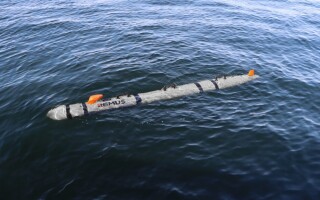Experiencing a healthy defense electronics market
StoryAugust 31, 2018
Welcome to our September Resource Guide, which for the sixth straight year is at least 100 pages - a rare feat in print publishing today. So thank you, loyal readers and advertisers for all your loyalty and support. Not only for your support of our publications in print and online, but also for your support of the warfighters and the sacrifices they make.
Welcome to our September Resource Guide, which for the sixth straight year is at least 100 pages – a rare feat in print publishing today. So thank you, loyal readers and advertisers for all your loyalty and support. Not only for your support of our publications in print and online, but also for your support of the warfighters and the sacrifices they make.
This year’s edition of our Resource Guide also set a record for advertising sales, which is a sign of the growth in the defense market thanks to increased funding coming out of the Department of Defense (DoD). Applications important to our audience such as radar, electronic warfare (EW), artificial intelligence (AI), command, control, communications, computers, intelligence, surveillance, and reconnaissance (C4ISR), cyber, unmanned systems, etc., are all seeing an increase in research, development, test, and evaluation (RDT&E) funding.
In our Defense Market Analysis section, analysts from Frost & Sullivan detail this growth and how commercial-off-the-shelf (COTS) embedded hardware and software play a role.
While funding is definitely increasing and soldiers, airmen, sailors, and marines will see new technology and support, they likely won’t see it quickly as the DoD acquisition process continues to lag behind commercial technology advances. In other words, this is why a general’s teenage kids sometimes have better tech than his soldiers.
“The speed of acquisition needs to improve,” Brad Curran, Industry Principal, Aerospace & Defense, Frost & Sullivan told me while speaking for our feature this issue. “The Obama administration made good improvements in this area, implementing various rapid acquisition programs and the current administration continues that effort, expanding some of those programs. There is a lack of U.S. defense industrial policy at the same time the DoD is pressing for more competition. DoD and industry need a complete understanding of the requirements, technology, program funding, and management stability.”
Curran’s colleague, Mike Blades, Research Director, North America for Frost & Sullivan, echoes him. “The procurement process has not increased in rapidity to meet with technological advances. The problem is that [the DoD has] been procuring things the same way for so long with legacy systems and then when you want to upgrade there is so much proprietary code that the old systems essentially can’t talk to the new systems. That’s why there is such a push toward open architectures for new software and hardware, so technology can be leveraged across platforms. This will reduce the cost of long-term upgrade and technology refresh cycles and in the end speed up the acquisition process. But, that will take time.
“The solution to a lot of these problems is software and commercial company involvement,” he adds. You may see defense companies gobble up innovative AI firms because not only does AI enable autonomous platforms but also automates data capture, data processing, as well as filtering which data is needed to enable tactical decision-making.
Speaking of AI and machine learning, we are launching a new, monthly electronic newsletter, titled “Military AI.” It focuses on AI technology in the defense and aerospace domain – from the plant floor to the battlefield. Coverage will focus on how engineers and warfighters will benefit from machine learning, predictive analytics, neural networks, and deep learning techniques leveraged in military and aerospace applications such as electronic warfare, radar, avionics, command and control, data mining, and more.
“Artificial Intelligence while not called out in programs of record per se is getting more funding in RDT&E,” Curran says. “For example the RDT&E slated for the Next-Generation Jammer covers how EW and information operations will look to leverage AI for network centric warfare, information and communications, etc.”
Embedded computing technology will enable AI systems such as cognitive EW, cognitive radio, cognitive radar etc. The DoD is only going to rely more on the COTS suppliers as they are the ones who take all those wonderful commercial processors, algorithms, etc., and enables it for use in rugged, mission critical military systems especially as the platform and component footprint continues to shrink.
Speaking right to our sweet spot, Blades says “innovation is still needed in embedded systems especially with thermal management and reducing size, weight, and power. Everything needs to be smaller. Innovation is also needed in extending battery life especially for sensors dispersed across thousands of miles in the ocean.”
And we will be here to tell you about it. So keep reading in print and online at www.mil-embedded.com. If you’re game, you can also become a contributor to the Magazine and our newsletters. Our 2019 editorial calendar will be released shortly. Look for it on our website then reach out to our Asst. Managing Editor, Lisa Daigle, to submit your abstract for approval at [email protected]. Reach out to me at [email protected] if you are interested in blogging or want to pen a letter to the editor.





